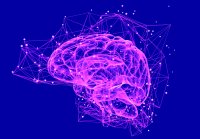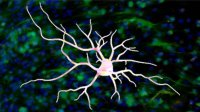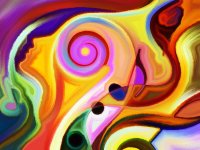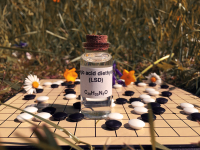
Do Our Brains Produce DMT, And If So, Why?
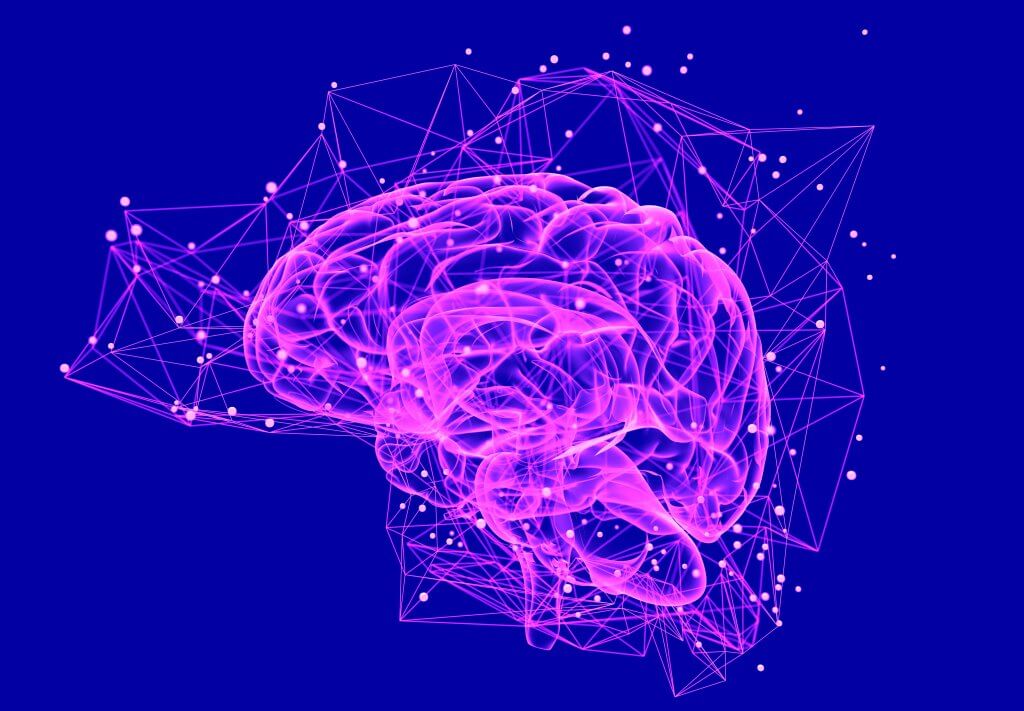
© Tatiana Shepeleva – stock.adobe.com
For such a simple and widespread molecule, N, N-Dimethyltryptamine (DMT) has done a remarkably good job at frustrating scientists. Famously dubbed “the spirit molecule” by Dr Rick Strassman, this tryptamine alkaloid produces an intense psychedelic experience when ingested, and appears in trace amounts in human blood and urine, suggesting it must be produced within the body. The purpose it serves, however, remains a mystery.
Though no one has managed to identify the source or function of endogenous DMT – meaning DMT produced within the body – a number of romantic theories have been put forward. The pineal gland – which psychonauts and pseudo-scientists have equated with the “third eye” – is often claimed to be the body’s DMT factory, and Strassman popularised the notion that the brain releases large amounts of the compound when we dream and during death, thus explaining the profound imagery we experience when we sleep and, supposedly, when we enter the white light.
Last weekend at Breaking Convention – Europe’s largest psychedelic science conference – researchers grappled with the mystery of endogenous DMT, among other things, in order to shed a little light on what we really know about this highly revered molecule.
Among the presenters was Dr Ede Frecska, who spoke about how DMT has been found to bind to the sigma-1 receptor, which is found throughout the body. This receptor plays a key role in protecting cells from dying when oxygen is low, making room for the argument that DMT may indeed be released in large quantities during death in a last-gasp attempt to keep our cells alive. Extrapolating from this finding, one might be tempted to hypothesize that this sudden flood of DMT may provoke the mystical encounters on the border between life and death that are often reported by those who die and are revived.
Also present was Dr Jimo Borjigin, who reported on the recent discovery of DMT in the pineal gland of rats, adding weight to the claims that this small gland may well be the source of endogenous DMT. However, before the crowd could get too carried away, Dr David Nichols took to the stage to provide a dose of scientific reality.
Explaining that the primary role of the pineal gland is to secrete melatonin in order to regulate our sleep cycles, he reminded the transfixed audience that we are yet to uncover any evidence of DMT actually being produced in the pineal gland of humans.
Furthermore, the quantity of DMT found in our blood is nowhere near enough to actually produce any effect when binding to sigma-1 receptors, which means that any claims about the compound playing a role in keeping cells alive or providing us with a mortal psychedelic send-off are, at this stage, mere conjecture.
Nichols went on to reiterate that one could just as easily theorise that endogenous DMT is nothing but metabolic waste, generated as a by-product during the synthesis of neurotransmitters like serotonin or tryptophan.
Ultimately, it seems we still have more questions than answers when it comes to endogenous DMT, although we can at least be more certain about the effects of DMT on the brain when ingested. A recent Beckley/Sant Pau study found that regular drinkers of the DMT-containing brew ayahuasca experience a prolonged increase in many traits associated with mindfulness, leading to enhanced mood. This effect has been correlated with a decrease in alpha brainwaves under ayahuasca, as well as a reduction in size of a brain region called the posterior cingulate cortex in long-term ayahuasca drinkers.
The Beckley/Imperial Research Programme is now preparing to begin a new brain imaging study led by Chris Timmermann, using both EEG and fMRI to monitor the neural activity of participants while under the effects of DMT. In doing so, we hope to uncover exactly how the compound triggers its remarkable acute effects, including the strange phenomenon of encountering “entities”.
For more articles about psychedelic research and current trends in drug policy, follow our Twitter and Facebook
Words: Benjamin Taub
Podcast
- All
Links
- All
Support
- All
BIPRP
- All
Science Talk
- All
Amanda's Talks
- All
- Video Talk
- Featured
- 2016 Onwards
- 2011-2015
- 2010 and Earlier
- Science Talk
- Policy Talk
One-pager
- All
Music
- All
Amanda Feilding
- All
Events
- All
Highlights
- All
Psilocybin for Depression
- All
Current
- All
Category
- All
- Science
- Policy
- Culture
Substance/Method
- All
- Opiates
- Novel Psychoactive Substances
- Meditation
- Trepanation
- LSD
- Psilocybin
- Cannabis/cannabinoids
- Ayahuasca/DMT
- Coca/Cocaine
- MDMA
Collaboration
- All
- Beckley/Brazil Research Programme
- Beckley/Maastricht Research Programme
- Exeter University
- ICEERS
- Beckley/Sant Pau Research Programme
- University College London
- New York University
- Cardiff University
- Madrid Computense University
- Ethnobotanicals Research Programme
- Freiburg University
- Medical Office for Psychiatry and Psychotherapy, Solothurn
- Beckley/Sechenov Institute Research programme
- Hannover Medical School
- Beckley/Imperial Research Programme
- King's College London
- Johns Hopkins University
Clinical Application
- All
- Depression
- Addictions
- Anxiety
- Psychosis
- PTSD
- Cancer
- Cluster Headaches
Policy Focus
- All
- Policy Reports
- Advisory Work
- Seminar Series
- Advocacy/Campaigns
Type of publication
- All
- Original research
- Report
- Review
- Opinion/Correspondence
- Book
- Book chapter
- Conference abstract
- Petition/campaign
Search type
